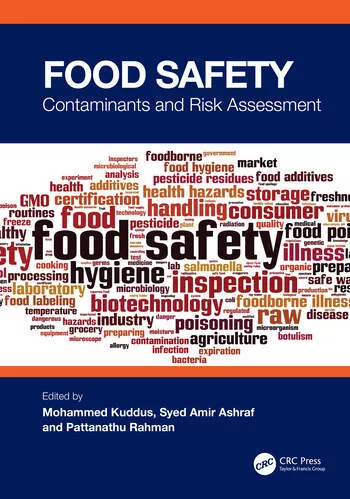Environmental Sampling Tools: Can It Put Your Food Safety Program at Risk?

Regulatory agencies agree that food processors must invest in monitoring programs to detect potential problems before products are released for consumer consumption. But how, in this new era of “swab-a-thons,” can your choice of environmental sampling kits put your safety program at risk?
Environmental monitoring in a food processing company works as an early warning system. Even though preventive controls and verification measures are required components of a facility’s food safety plan, environmental monitoring and product testing are not preventive controls. They are used to verify that preventive controls are working.
Although the U.S. Food and Drug Administration (FDA) has indicated its intent to more frequently collect swab samples during inspections, most companies have not changed their programs. Their resistance to change is because of the large investment they have made in efficient monitoring programs. These programs detect potential problems before products are released for consumer consumption. This provides assurance to the consumers and a valuable legal protection for the companies. Those guarantees are not inexpensive. Based on a publication of the National Sustainable Agriculture Coalition, “The costs associated with implementing environmental monitoring at a facility therefore varies based on the number and type of processing activities. For a business with fewer than 20 employees, FDA estimates it would cost $3,041 annually to test for Salmonella, and another $2,891 to test for Listeria.” Due to the importance of this investment and the resulting consequences, the industry needs to feel assured about the validity and the accuracy of the obtained results.
The relevance of the environmental monitoring depends on the proper design of the sampling plan and the performance of the tool used. In this paper, we will address how the sampling tools could represent a risk for a safety program and how this risk could be mitigated.
Environmental Sampling Tools
The different environmental sampling kits offered on the market consist of a sterile sampling bag with an insert (sponge, sponge on a stick, swatch or swabs) impregnated with a neutralizing solution to protect the stressed bacteria. One of the risks to be monitored is the origin of the insert material and its manufacturing process. Some plastics or sponges used in sampling kits are submitted to biocide treatments during their manufacturing. If the biocides are not removed during the fabrication process, they can affect the recovery of the microorganism. In an effort to guarantee the quality of their products, the manufacturers of the sampling tools evaluate the sterile kits and inserts for the presence of biocides. Note that it is very difficult to extract the very little quantities of biocides from an insert, if present, for their detection. The question is then, “If it is so hard to detect the biocide traces in a sampling kit, are they representing a real problem?” The answer is YES!
Biocides
Most food processing companies take environmental samples and ship them to a laboratory that uses a rapid test for pathogen detection or they proceed with a rapid test in their own laboratory. The traces of biocides that can be present in the insert remain in contact with the bacteria during the enrichment and while it is being transported. At this point, it is important to keep in mind that a variety of rapid tests use optimized enrichment, which reduces the incubation time from days to hours. In this case, the bacterial growth could be affected by the presence of biocide traces; hence, they could be bacteriostatic (slowing down or stopping the bacterial growth).
.png) Pathogens such as Listeria are particularly affected because they are more sensitive than the accompanying natural microbial population (flora). As a consequence, it is possible that the bacteria don’t sufficiently grow to reach the limit of detection of the rapid test, thus giving a false-negative result as shown in Table 1.
Pathogens such as Listeria are particularly affected because they are more sensitive than the accompanying natural microbial population (flora). As a consequence, it is possible that the bacteria don’t sufficiently grow to reach the limit of detection of the rapid test, thus giving a false-negative result as shown in Table 1.
It is then of utmost importance to ensure the effectiveness of the sampling kit, although a standard method for evaluating the kit doesn’t exist.
This method should be developed and validated using negative and positive controls to ensure an accurate interpretation of the results. It should preferably mimic the industrial use of the kit by the recovery of the stressed sensitive pathogen from an inoculated surface. Since humidity strongly influences bacterial survival and, consequently, the test results, the inoculum (number of bacteria used) and the relative ambient humidity rate should be taken into consideration.
Neutralizing Agent
As the sampling kit also includes a neutralizing agent, some other controls are necessary. In fact, the neutralizing capacity of the wetting solution must be guaranteed. Since most of the environmental samples are taken after a cleaning or sanitation process, it becomes fundamental that the kit is able to neutralize any trace of disinfectant. If it is not able to neutralize it properly, the growth of the target bacteria could be affected and false-negative results could be obtained.
Solution pH
Another simple but important test is to verify the pH of the solution. Most of the sampling kits are sterilized by gamma irradiation because of the significant advantages over other methods of producing sterile products. These benefits include low temperature and simple validation of the process, better assurance of product sterility than filtration and aseptic processing, no residue like ethylene oxide left behind and more penetration than an electron beam.
Keep in mind that gamma irradiation is not only capable of killing microorganisms; it can also produce free radicals from water molecules, which can affect the solution. The principal effects that can be observed when a solution is not stabilized are changes in its general characteristics or pH. The pH drops drastically, with the possibility of becoming very acidic. Taking into consideration that the bacterial growth can be reduced by the pH effect, it is very important that the solution present in the sampling kit has the right pH.
The bacteria present in a food processing environment is frequently stressed and, as such, more sensitive to low pH. It would be a good practice for the quality control team to verify, on site, the pH of the kit they use for sampling.
Sterility
The sterility of the kit is essential because it guarantees that no microorganism, particularly pathogens, is introduced in food processing companies through the sampling tools. The sterility becomes crucial when the cleaning of a food contact surface is evaluated by total aerobic microbial count.
Conclusion
.png) It is very important that the quality control team in the food processing industry verifies the conformity of the tools used (for a summary, see Table 2) to evaluate their food safety program. This is essential to reinforce the credibility of the environmental sampling program.
It is very important that the quality control team in the food processing industry verifies the conformity of the tools used (for a summary, see Table 2) to evaluate their food safety program. This is essential to reinforce the credibility of the environmental sampling program.
Dr. Gabriela Martinez obtained her Ph.D. in microbiology. She presently works for Labplas as the scientific director, where her focus is on the development and improvement of sampling tools that help the industry in their sanitary process.
Looking for quick answers on food safety topics?
Try Ask FSM, our new smart AI search tool.
Ask FSM →






